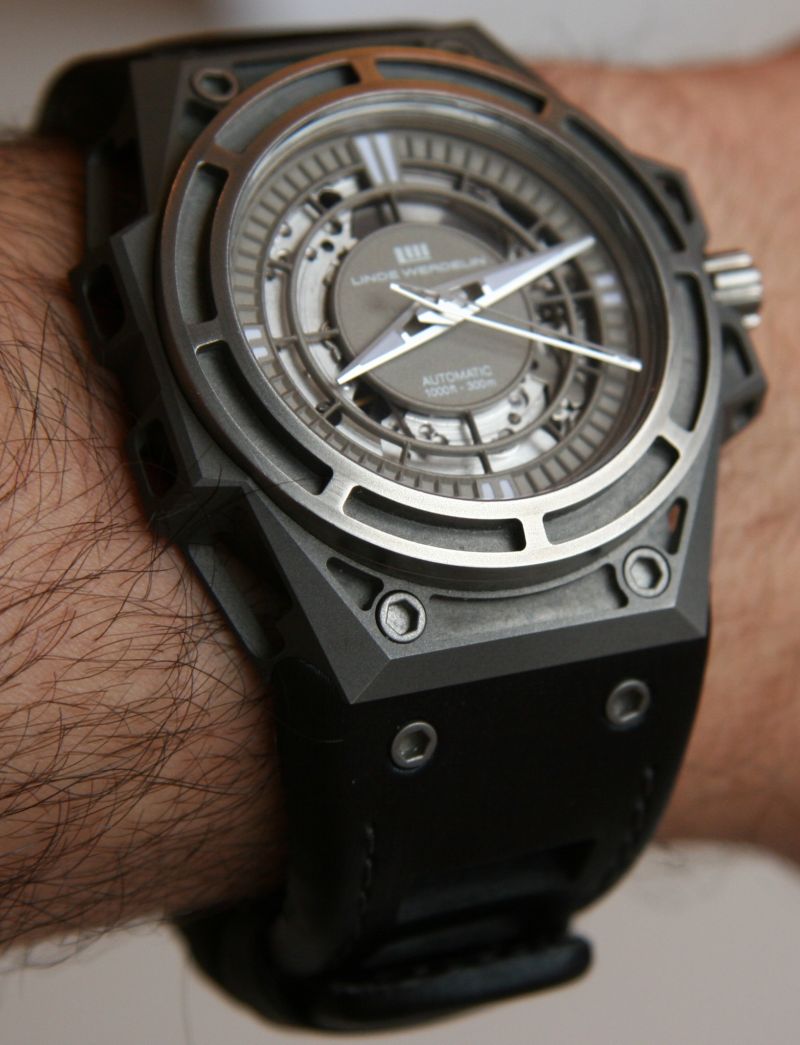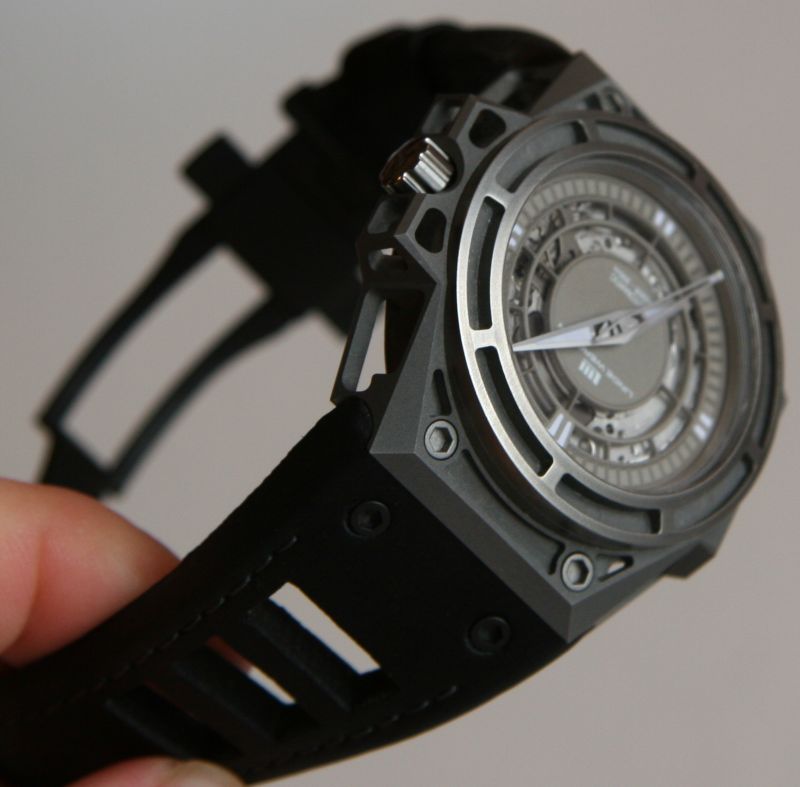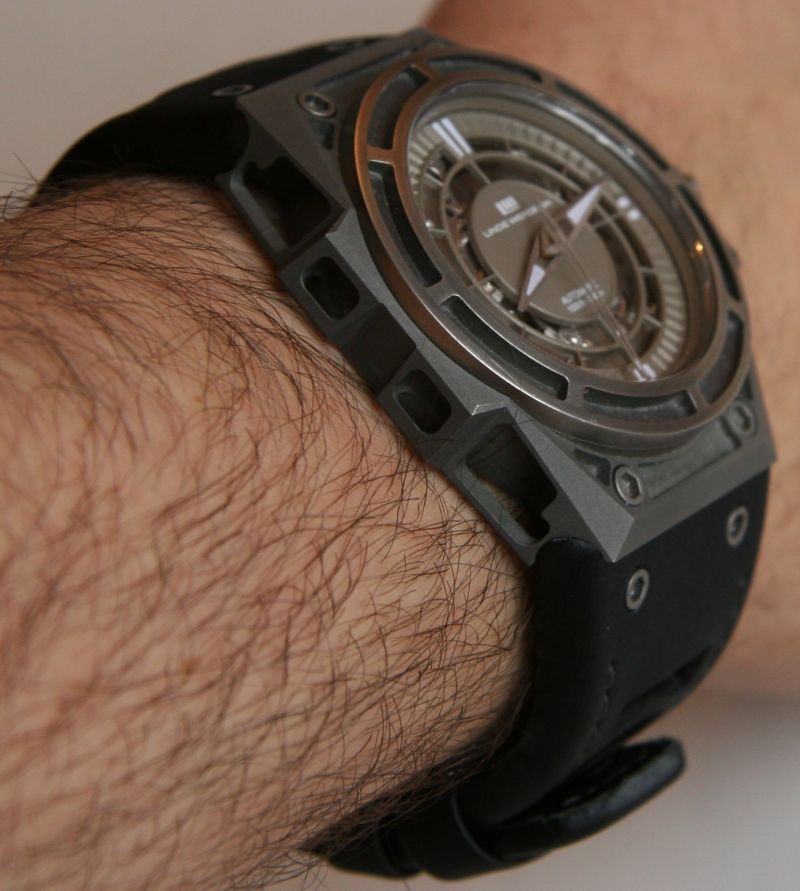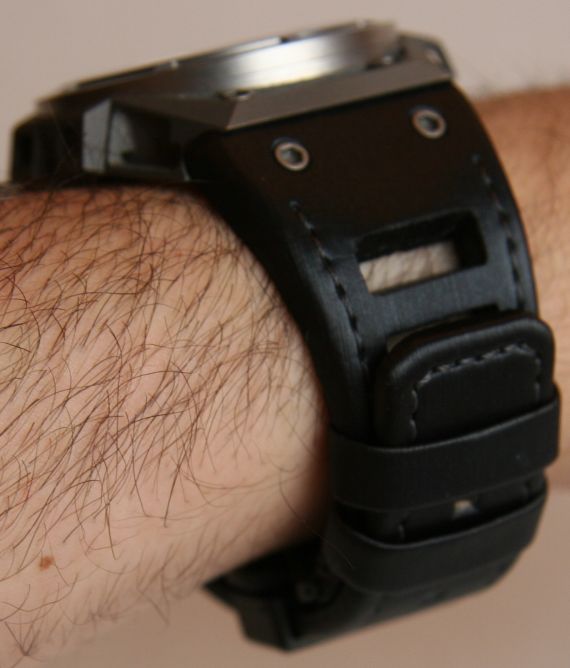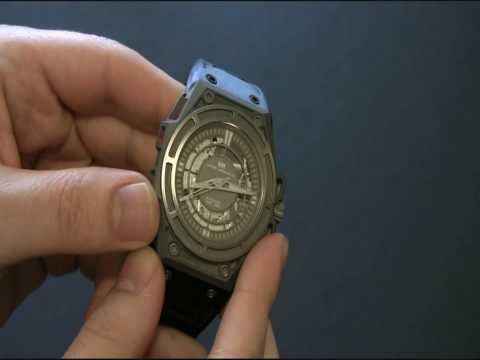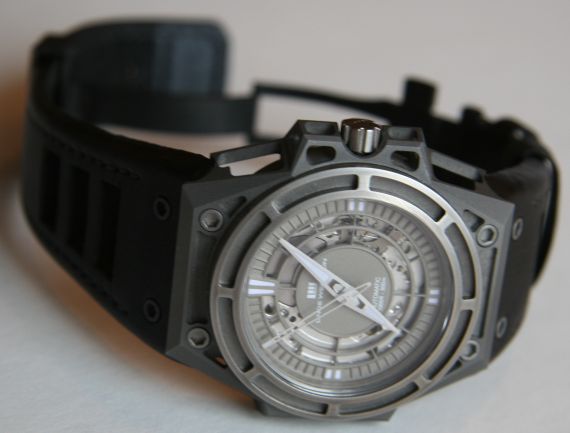
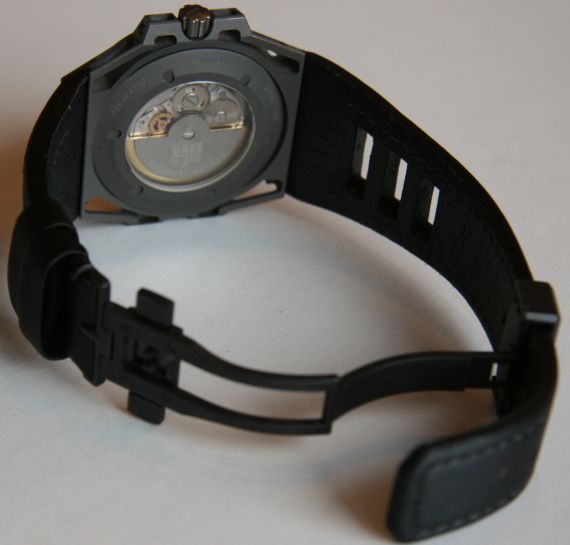
‘Ode to be different.’ Isn’t that the message most items of independent ilk wish to aspire to? To be different yet plausible is one of the key elements of creative functionality. It is easy to be creative when you simply make something “new” by adding a previously unused color. It is more difficult to be creative to the extent that you offer something instantly familiar but “different.” For me, that is part of what the Linde Werdelin SpidoLite watch is all about. Offering the functionality you expect, with something unique you can’t get somewhere else.
I can’t say that I know the origin of the SpidoLite name or design. Perhaps if I did I would be able to comment on it outside the realm of speculation. But as far as speculation goes, I have a good handle on things when it comes to what Linde Werdelin did to make the SpidoLite what it is. I seems like the good people there had a little talk about what they could to do in order to follow some of the current trends in watch making and watch lover demand. Among those items are use of titanium, skeletonization, cross-company collaboration, and utilizing NOS (new old stock) movements. They were able to fit each of these elements into the SpidoLite watch, and do so in an interesting way. You can read about my announcement of the Linde Werdelin SpidoLite watch here to get some basic information of the available SpidoLite models. You don’t need any special information in how to operate this vintage movement. It doesn’t operate quite as smoothly as the ETA 289X series of movements used in other Linde Werdelin models, but has a unique charm from back when mechanical movements were more than just a purists delight (as they are today), but were how most watches at the time operated (before the quartz revolution/crisis).
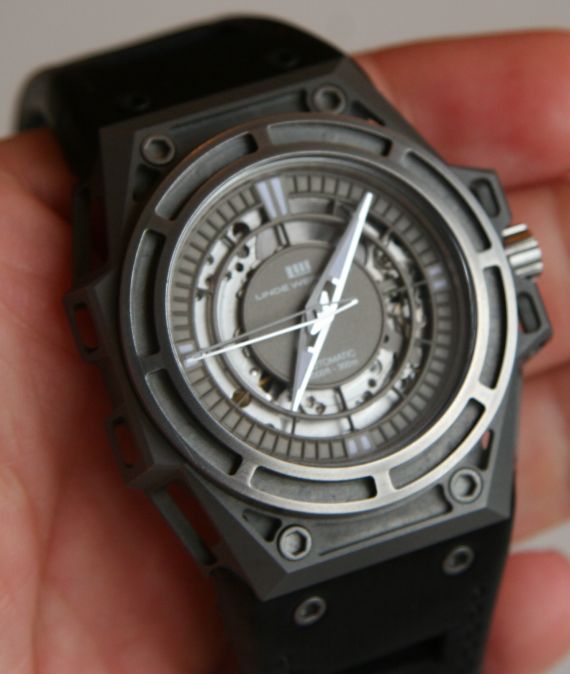
For the case of the watch, Linde Werdelin took their existing Biformeter case, did it in titanium and skeletonize it. Case skeletonization is rare to see, and the SpidoLite is the first time I have seen such extensive skeletonization done, not to mention it is the first time it was done with a titanium case to my knowledge. The case still retains the ability to have one of Linde Werdelin’s Instruments attach to it, but has a wild “cut-out” look. Titanium is much harder to work with than steel, so it is interesting just what Linde Werdelin was able to do. As such, you can really see how much of the watch case there were able to cut away but make it work. It retain the same shape as the standard Linde Werdelin case, but literally looks like a skeleton. The case alone is very light, but doesn’t feel fragile, and has some heft because of the steel based movement inside of it. The case is cut in a very fine manner. There are some sharper edges if you places your fingers along some of the edges, but nothing major. The style and work that went into the case is such a clear sign of the times. It is a very “now” watch, and for the very “now” person that is a good thing. Years from now people will look to the case and think to themselves just how cool it was that someone had the guts to pull it off. The SpidoLite has an older 1970’s automatic mechanical movement. This goes to the love of vintage stuff, while also giving you the assurance of modern goods.
There are two versions of the vintage movement, with this model I am sharing with you being the most impressive. It is impressive because Linde Werdelin teamed with Svend Andersen to finish the movement. That means that Svend Andersen’s shop takes the movements and essentially rebuilds them while applying polishes to many of the pieces. The result is a glorification of the original movement with the flair and sophistication that Svend Andersen’s impressive talents are able to imbue upon it. Note that the watch you see in the images is a prototype. Meaning that the models you will be able to buy are going to look better and have a special blue gold automatic movement rotor with Svend Andersen’s logo on it. No one other than Svend Andersen uses blue gold. The watches with Svend Andersen’s touch will be known as the “SpidoLite SA,” and will be limited to just 44 pieces. Svend Andersen’s level of decoration and finishing is impressive. Rather than distract you from the movement by looking at decoration, the finishing helps highlight the various components of the movement. You case see the movement through the partially skeletonized dial, as well as through the exhibition caseback.
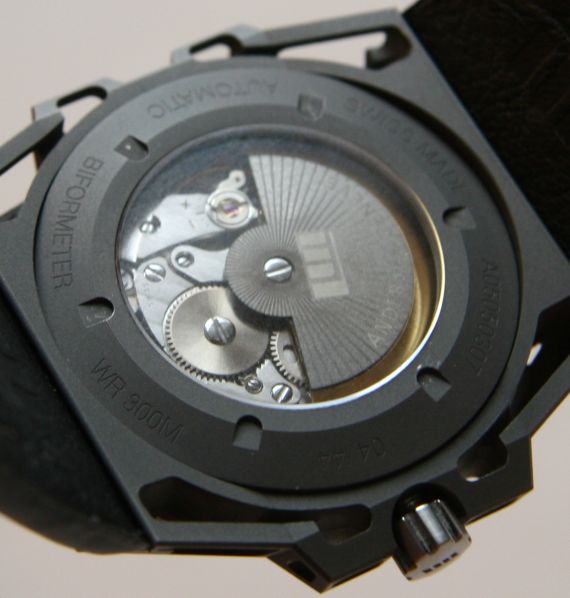
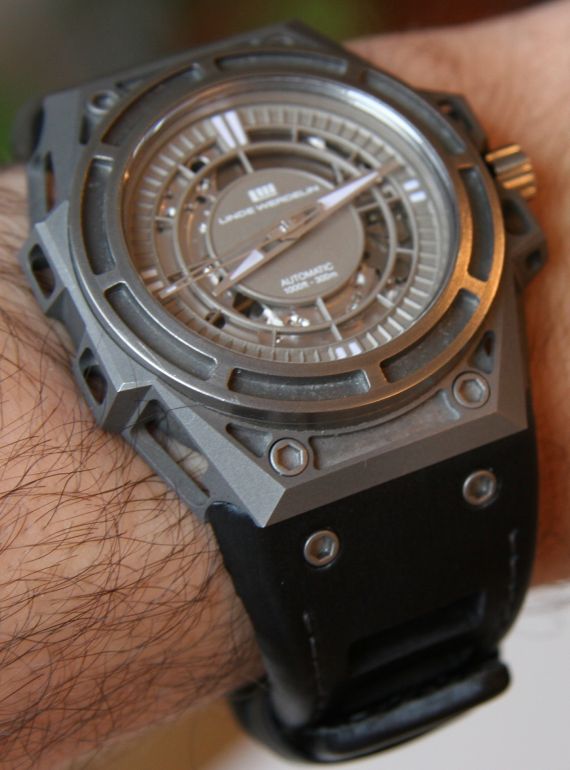
There is another trendy area that Linde Werdelin is nodding at with the SpidoLite – gray watches. The SpidoLite is a decidedly gray watch as you can see in the dial and the case. The dial is interesting. You have the skeletonized hands (that still have SuperLumiNova on them), and the various pieces of the dial. Still, part of the dial design gives you markers for the hours and minutes, so you can still read the time. The SpidoLite isn’t quite as legible as other Linde Werdelin pieces, but you’ll spend more time admiring the watch itself than relying on it for the time. The case and watch are not flashy, so don’t expect that. Rather, they are visually interesting and unlike anything you have seen before, I promise. As is the case with all Linde Werdelin watches, the BiFormeter case and strap style make for a very comfortable wearing experience. I really can’t stress that enough. On the SpidoLite, Linde Werdelin places a fabric style strap with a titanium push-button operated folding deployment. To match the skeletonziation of the case, the strap has three rectangular pieces cut out on each side. I’ve handled a few Linde Werdelin watches, each with a different strap material, and they feel comfortable each time. What I like is that you can wear them tight or a bit loose, and they are still highly compatible with comfort. Despite the avant garde nature of the design, the SpidoLite is still a hard watch with double sapphire crystals and 300 meters of water resistance. I don’t think that Linde Werdelin would ever release a watch no matter how interesting it might look, that didn’t satisfy the basic “adventure watch” requirements.
The SpidoLite SA is the most expensive of the bunch at over $12,000 (9,800 eur0s). Other versions without the Svend Andersen treatment go for less down to about $8,000 (6,600 euros). You can check out the full Linde Werdelin SpidoLite collection here. For the person who enjoys as satisfying artistic timepiece that don’t make a point of being “art,” the SpidoLite is far and away a good choice if you are as taken with the design as I am.


